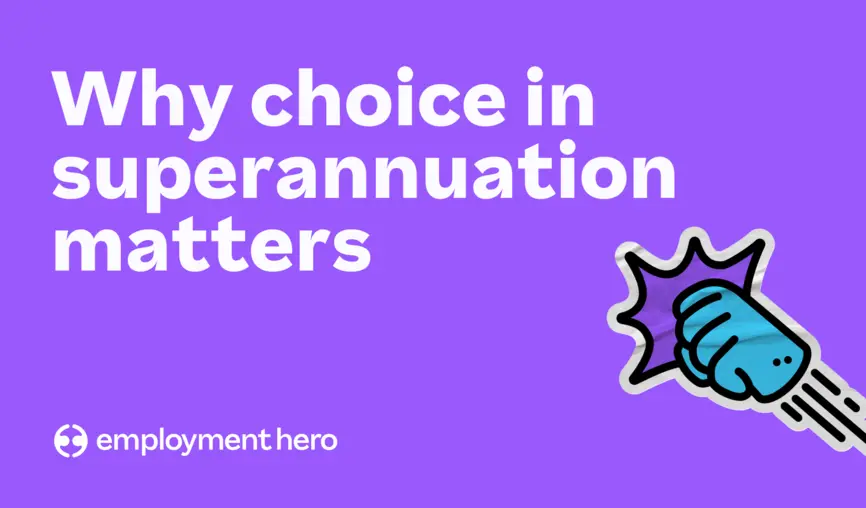Forecasting AI use cases in HR for 2024
AI in HR: From sci-fi to reality in 2024 and beyond…

Contents
Smart leaders understand that AI can help solve a variety of business problems and can help them grow faster. In fact, 58% of businesses are now using AI for at least one task at work. This applies to HR leaders too – 85% of HR leaders are already using at least one tool that leverages AI. This widespread use indicates that AI tools are not just future possibilities but current realities in the workplace. Read more about how ChatGPT is revolutionising HR and people management. Using AI effectively goes beyond just applying it; it’s about unlocking its full potential. In our mission to innovate in HR, this blog post will evaluate how we currently use AI and look into what it could do in the future. While looking at how AI has developed over time could give us some useful perspectives, today we’ll be focusing on how AI is being used in HR right now and what new features we can expect in the near future. To fully harness AI’s potential while maintaining a human touch, it’s crucial to understand how AI complements human efforts in HR and payroll. Learn how to keep the human in Human Resources and payroll with AI.
Where is AI today?

As we can see, AI is becoming a familiar face in the HR department. It’s helping streamline many tasks and processes, freeing up HR pros to focus on what they do best – fostering a positive work environment and building a strong team. When we asked HR leaders how they’re using AI, the most common application in HR is content creation (31%), such as job specifications, announcements, and policies, presumably through generative AI like Chat GPT. This is followed by identifying and reporting on employee data trends (30%) and automating tasks such as reminders (27%). Has it replaced humans yet? Well, not to the extent some may have feared. Think of AI as a super-powered assistant. It can scan resumes to find the perfect candidates, answer frequently-asked questions during the application process, and even schedule interviews. This allows HR professionals to focus on in-depth interviews and building relationships with top talent. Almost two-thirds (64%) of our survey respondents said they believe AI saves time and makes their jobs easier, with more than half (55%) anticipating a transformative AI revolution in HR. So without further ado, let’s look at what that revolution may look like.
AI use cases in 2024 and beyond
1. Recruitment and onboarding
The challenges
The recruitment and onboarding process can be time-consuming and challenging. HR teams often find themselves sorting through countless CVs, conducting multiple interviews, and making sure new hires have a smooth transition. Unfortunately, traditional methods can sometimes lead to inefficiencies and a less personalised experience for candidates. One study found that a whopping 42% of job seekers have declined a job offer due to a bad interview experience. Contrast this with Aberdeen Group’s findings: companies with a strong onboarding process experience 50% lower new hire turnover within the first six months. So how can AI help?
AI solutions
We’re already living in an era where AI plays a big role in recruitment and onboarding processes. AI-powered job boards efficiently connect candidates with roles that fit their skills and preferences. Automated resume screening saves time by filtering out unsuitable candidates early on. Video and AR interviewing platforms make the interview process more interactive and engaging, helping us understand candidates better. Chatbots help streamline candidate communication, providing updates and answering questions promptly. And when new employees join, personalised AR onboarding plans offer a unique and engaging way for them to learn about their roles and the company culture, making sure they feel welcomed and valued from the start. The average time it takes to fill a role in 2023 was 44 days. This process can be tedious and time-consuming. Is there a way to make it faster? Absolutely! By using AI-driven applicant tracking systems like Employment Hero, we can make the recruitment process more efficient and effective. Tools like SmartMatch can help parse CVs and match skills and experiences to open roles, saving you from wasting time on poor quality applicants. Let’s say goodbye to expensive job boards and hours spent sifting through resumes, and say hello to connecting with the best talent every time.

2. Performance management
The challenges
Traditional performance management often relies on infrequent and biassed assessments, making it challenging to accurately gauge employee performance and development needs. This is because appraisals typically happen annually and can be affected by recency bias where more weight is placed on recent performance – even if it doesn’t reflect the employee’s performance over the course of the year. The ‘halo effect’ is when a positive impression in one area clouds judgement of other areas. And the opposite can also happen: the ‘horn effect’ is where a negative impression in one area (e.g., a missed deadline) overshadows positive contributions. Overall, this can lead to disengagement and missed opportunities for growth.
AI solutions
AI is a great tool for enhancing performance management. It can provide unbiased feedback through 360-degree assessments, helping everyone gain a more well-rounded view of employee performance. Automated goal setting and progress tracking make it easier for employees and managers to stay on the same page and focused on important objectives. Additionally, personalised coaching recommendations offer tailored advice for professional development, making it easier for employees to improve and grow in their roles. For instance, an AI system might identify that an employee excels at technical skills but struggles with public speaking. The system could recommend online courses on presentation skills or connect the employee with a mentor who can provide coaching. And with gamified career progression, employees can turn their career development into a fun and interactive journey, gaining new skills and reaching their goals in a motivating way. Rather than conventional methods of progression, an AI system can track progress towards career goals and reward employees with points or badges for completing tasks or achieving milestones.

3. Learning & Development (L&D)
The challenges
Staying current with fast-changing job requirements and technology can feel overwhelming at times. It’s not uncommon for traditional training methods to struggle in meeting the different learning styles of today’s workforce, leading to gaps in skills and knowledge. Conventional training methods, like classroom lectures or one-size-fits-all online modules, often struggle to keep up with this ever-evolving landscape. Indeed, LinkedIn Learning’s 2023 Workplace Learning Report found that 42% of learners reported a lack of engaging learning content in their organisations.
AI solutions
AI-powered learning platforms are changing the way employees learn by providing personalised recommendations and adaptive learning paths that cater to individual needs and preferences. There’s also an increase in microlearning content, designed to be easily digestible and accessible, seamlessly fitting into busy schedules. Generative microapps are augmenting the human workforce: these small AI-powered applications are designed to intelligently assess and develop the skills of a workforce and offer a high level of customisation and efficiency in workforce development, ensuring employees have the necessary skills to succeed in a rapidly changing workplace. We can expect Virtual Reality (VR) and Augmented Reality (AR) training to become mainstream, creating immersive learning experiences in a safe and cost-effective manner. Perhaps the most underrated use case is to use AI to promote cross-functional and collaborative learning among employees from different departments, leading to enhanced team performance.

4. Employee engagement and wellbeing
The challenges
Maintaining high levels of employee engagement and wellbeing is important for productivity and retention but can be challenging to monitor and improve continuously. It needs to be a top priority for employers: according to the Burnout Report 2024, 91% of adults in the UK experienced high or extreme levels of pressure or stress at some point in the past year, and 1 in 5 needed to take time off work due to poor mental health caused by pressure or stress.
AI solutions
AI tools have the ability to analyse extensive amounts of employee data, such as surveys, emails, and performance metrics. This enables HR to pinpoint trends and potential issues regarding employee morale or engagement. For instance, AI can highlight employees who may be at risk of burnout based on decreased productivity or changes in communication patterns. By utilising real-time data, HR can proactively address concerns before they escalate. HR chatbots powered by AI improve accessibility while personalising support. They can provide answers to basic employee inquiries about benefits, policies, or company procedures. This allows HR professionals to focus on more complex issues and gives employees round-the-clock access to information and support. Some bots can assess employee data to recognise potential needs for mental health and wellness resources. Using this analysis, HR can suggest relevant programmes or services, like online stress management courses or access to confidential counselling. And by integrating AI into company platforms, a data-driven Digital Employee Experience (DEX) can be created. This DEX can monitor employee engagement with company initiatives, learning progress, and work performance. Through analysing this data, HR can make informed decisions regarding training programmes, career development opportunities, and workplace arrangements, underpinning a more positive and productive work environment for all.

5. Administrative tasks
The challenges
The administrative side of HR, including payroll, benefits administration, and expense reporting, is often fraught with manual processes that are both time-consuming and prone to error.
AI solutions
AI brings efficiency and accuracy to HR administrative tasks. Automating payroll and benefits administration reduces the risk of errors and frees up HR professionals to focus on more strategic initiatives. AI-driven expense reporting simplifies the submission and approval process, making it faster and more user-friendly. By automating these routine tasks, AI allows HR teams to operate more efficiently and effectively, contributing to a smoother, more productive workplace. Moreover, with Web 3.0 on the horizon, HR departments will need to adapt to the new technological landscape. Discover how Web 3.0 will change HR and what to expect. While the idea of AI “managers” hiring, firing, and training employees might seem a thing from the future, research by IDC in their Future of Work 2022 report predicted that by 2024, 80% of the global 2000 organisations will be doing just this. This could involve automating administrative tasks like scheduling interviews, screening resumes, or even providing initial training modules. We’ve already seen examples of this with companies like Amazon using AI algorithms or bots to fire employees. To understand how these trends are shaping the industry, it’s helpful to look at recent studies. Check out the Sentiment On Human Resources & AI report for in-depth insights.

What do these technologies reveal?
Overall, these technologies are opening up new possibilities for businesses to improve their operations and enhance employee satisfaction. Here are four trends to highlight: 1. Democratisation of AI AI is becoming more accessible and user-friendly for small businesses, making it easier to utilise without advanced technical knowledge. 2. Focus on employee experience There is a greater focus on improving employee experience through AI, moving beyond simple automation to enhance engagement and retention. 3. Data-driven decision making HR analytics powered by AI are providing deeper insights into workforce trends, talent acquisition, and performance management. 4. Hyper-personalisation is here AI is enabling hyper-personalisation in learning, career development, and performance feedback for individual employees.
What can we expect on the horizon?
In the short-term (1-2 years), we can expect to see recruitment processes become more streamlined, automated resume screening, engaging with candidates through chatbots, and AI-powered onboarding experiences. Looking a bit further ahead, in the mid-term (3-5 years), we anticipate more personalised learning and development recommendations, AI-driven performance feedback and coaching, as well as sentiment analysis for monitoring employee morale. And in the long-term (5+ years), we can look forward to predictive talent analytics for workforce planning, AI-powered conflict resolution and support for employee wellbeing, and fully autonomous HR processes. The future of leadership might even see us reporting to AI. Explore the potential of AI in leadership and the implications of robot managers. If we truly throw caution to the wind and leap into a future unbound by reality, here are some mind-bending possibilities for AI in HR further down the line.

How about…
- Brain-computer interfaces for enhanced productivity? Imagine focusing your thoughts to seamlessly open documents, navigate complex data visualisations, or even dictate emails directly, maximising productivity with a single thought.
- Quantum algorithms for immersive and personalised workspaces? Imagine personalised interfaces that adapt to individual preferences and work styles, leveraging quantum algorithms to predict needs and preferences in real-time. Think holograms projecting task information directly onto your desk, or augmented reality interfaces providing contextual guidance without disrupting your workflow.
- Dream-based training? AI analyses employees’ dreams and extracts valuable insights for personalised skill development and problem-solving techniques.
Exciting times ahead, right? But before we all get carried away with AI, let’s look at some of the practicalities and considerations.
Considerations for SME and HR leaders
When it comes to data privacy and security, it’s important to ensure compliance with regulations and put in place strong security measures to protect sensitive employee data. Be aware of European legislation since the European Parliament has approved the Artificial Intelligence Act, aiming to ensure AI safety and compliance with fundamental rights while fostering innovation. The legislation bans certain AI applications that threaten citizens’ rights, such as biometric categorisation systems and untargeted scraping of facial images, and sets strict obligations for high-risk AI systems to protect health, safety, and fundamental rights. It also introduces measures to support innovation and SMEs, including regulatory sandboxes and real-world testing accessible to SMEs and startups. For SME HR leaders, transparency and explainability are key when it comes to AI. Make sure to clearly communicate how AI is used in HR processes and ensure that its decisions are transparent and easily understandable. Take a ‘Human-in-the-Loop Approach’ – an approach which combines human expertise with machine learning to create a system that iteratively improves through human feedback. Remember, AI should enhance human judgement and decision-making in HR, not replace it. Small businesses face unique needs and challenges. Start by identifying your most pressing HR pain points and choose AI solutions that directly address them. Before implementing any AI solution, carefully evaluate the potential impact and return on investment. By staying informed about trends and focusing on ethical and responsible use, AI can be a valuable tool for driving HR success in your small business.

Wrapping up AI in HR 2024
The integration of AI in HR isn’t just for Big Tech – it’s becoming a reality for businesses of all sizes, particularly SMEs seeking to optimise their HR processes. People analytics, decision intelligence, and business intelligence powered by AI are rapidly transforming core HR functions. While some predictions may seem like science fiction today, the rapid pace of technological advancement suggests they might become commonplace sooner than we expect. The key takeaway? HR professionals who embrace AI’s potential will be well-positioned to navigate the changing landscape, predict future talent needs, and ultimately, transform HR into a strategic driver of business success.
Related Resources
-
 Read more: NSW Government introduces Portable Long Service Scheme for the Community Services Industry
Read more: NSW Government introduces Portable Long Service Scheme for the Community Services IndustryNSW Government introduces Portable Long Service Scheme for the Community Services Industry
The NSW Government has introduced portable long service leave for the community services industry. Learn what it is and what…
-
 Read more: Payday Super changes: What we’re fighting to fix and why it matters to you
Read more: Payday Super changes: What we’re fighting to fix and why it matters to youPayday Super changes: What we’re fighting to fix and why it matters to you
Big changes are coming to how superannuation is paid in Australia. Here’s what we’re asking Treasury to seriously consider updating…
-
 Read more: Why choice in superannuation matters
Read more: Why choice in superannuation mattersWhy choice in superannuation matters
What could be coming when Payday Super hits and what Employment Hero is doing about it.












